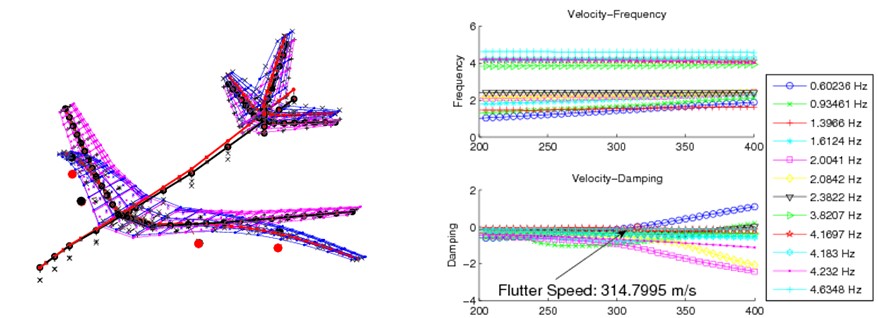SMARTCAD represents the kernel for the aeroelastic analysis at the conceptual design level. A simple structural modelling technique based on beams and lumped masses is considered at the beginning of the design process. This is justified by the lack of detailed structural information and by the primary concern of obtaining an estimate of stiffness and structural/nonstructural mass distribution. Nevertheless, keeping in mind that large transport aircraft featuring high-aspect-ratio wings can undergo large displacements with small linear elastic deformations, a nonlinear beam model is available to consider both stiffening and geometric nonlinearities from the very beginning. SMARTCAD is the numerical module dedicated to aerostructural analysis. It can be used as a stand-alone application once the structural and aerodynamic meshes are provided, together with specific solver parameters.
Different kind of analysis can be carried out:
- Static analysis, linear buckling.
- Vibration mode calculations.
- Linearized flutter analysis.
- Linear/nonlinear static aeroelastic analysis, trimmed calculation for a free-flying rigid or deformable aircraft.
- Steady and unsteady aerodynamic analysis to extract derivatives for flight mechanics applications. Structural optimization.

Typical SMARTCAD results: trimmed, free flying elastic aircraft (left) and V-g plot (right).
Currently, beam models and classic lifting aerodynamic surfaces are heavily used. Despite this, the code can be coupled to high-fidelity aerodynamic models belonging to the class of Computational Fluid Dynamics (CFD). Complex aeroelastic phenomena, mainly due to aerodynamic nonlinearities such as the transonic dip, can then be investigated.
The time required for the preparation of the aeroelastic model is shortened by the AcBuilder preprocessor and by the capability of GUESS module to automatically generate both structural and aerodynamic mesh as well the fluid-structure interface.